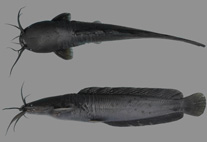Abstract
The Polystira clade (here comprising Polystira and Pleuroliria) is a poorly known but hyper-diverse clade within the neogastropod family Turridae (sensu stricto). It has extensively radiated within the tropics and subtropics of the Americas, to which it is endemic. In this paper we present a synthetic overview of existing information on this radiation together with new information on estimated species diversity, systematic relationships, a species-level molecular phylogenetic analysis and preliminary macroecological and diversification analyses, to serve as a platform for further study. We currently estimate that about 300 species (122 extant) are known from its 36 million year history but this number will undoubtedly increase as we extend our studies. We discuss the relationships of Polystira to other Neotropical Turridae (s.s.) and examine the taxonomy and systematics of the geologically oldest described members of the clade. To aid taxonomic description of shells we introduce a new notation for homologous major spiral cords. Focusing on key publications, we discuss in detail the changing historical understanding of the taxonomy of the clade and the relationships of its component genus-level taxa: Polystira Woodring, 1928, Pleuroliria de Gregorio, 1890, Josephina Gardner, 1945 and Oxytropa Glibert, 1955. We designate a neotype for Pleurotoma (Pleuroliria) supramirifica de Gregorio, 1890, to stabilize our understanding of this, the type species of Pleuroliria. Application of the name Oxytropa is restricted to the type species. The genus Polystira is conchologically re-described and for the first time we synthesize available information on the anatomy, feeding and toxinology, reproduction and life history, larval modes and life habits, and geographic and bathymetric ranges of its species. We give an updated list of the 19 formally described living species and present the pitfalls of the currently poor species-level taxonomy of Polystira using case examples. We present a molecular phylogenetic analysis of 22 extant species using three mitochondrial gene fragments (COI, 12S rRNA and 16S rRNA). This reveals undescribed species and indicates that Recent genetic clades (‘biospecies’) are consistent with finely divided conchological ‘morphospecies’. Historically, there has been a slow realisation of the high species diversity of the Polystira clade and we consider that this may be due to inadequate precision of morphological description of shells and a lack of clear homology statements. We suggest how these both might be improved. Finally, using a data compilation based on museum specimens we examine species range-size distributions and species abundance distributions for 85 of the 112 extant western Atlantic species that we have delimited to date. Our results indicate that the majority of species are rare and have short geographic ranges; only a few are wide-ranging and abundant. This has important implications for surveys of biodiversity.

